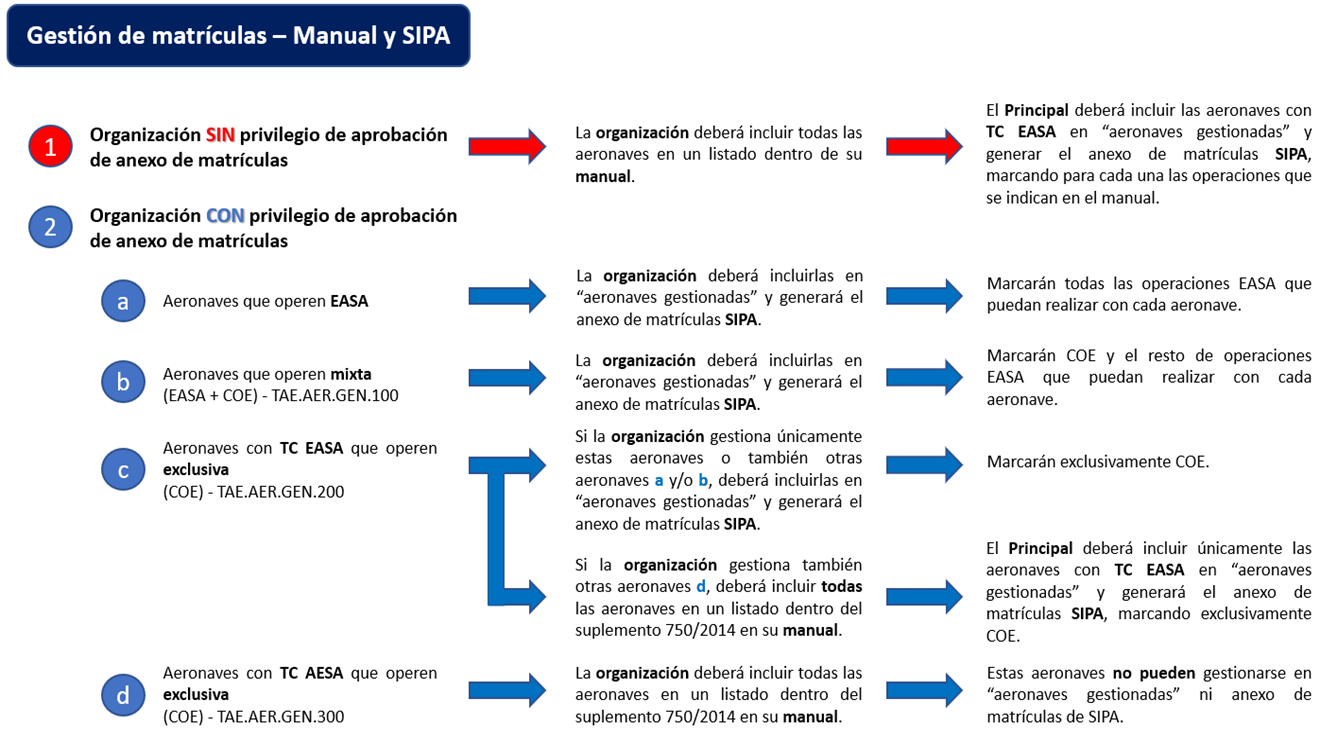- Does Part ML Aircraft Apply Event Analysis and Tracking (Follow-Up)? And to ML aircraft whose airworthiness is managed by the owner/individual?
- Individuals: they are exempted from the requirements of having databases, performing analyses, etc. In summary, they are only required to notify.
- Organisation: the full follow-up concept is applied to them.
The occurrence reporting applies to all ML aircraft (according to ML.A.202 and AMC 1 ML.A.202), but in terms of analysis and monitoring of events (follow-up), we will have to differentiate between aircraft managed by:
The occurrences of mandatory reporting for an individual and an organisation are different.
In the following link is the section of the AESA website for the Analysis and Tracking of Events (Follow-Up), including the Guide to the Analysis and Monitoring of Events (Follow Up).
- What should be indicated in the CAME Registration Schedule if an aircraft has an EASA type certificate, is managed by a CAMO and performs mixed operation (COE and an EASA operation)? And in the case of aircraft that do not perform EASA or COE operation (e.g. police)?
- In the annex of registrations of SIPA, the COE operation and the rest of the EASA operations that could be carried out shall be marked.
- If correctly defined in the SIPA registration annex, this information shall not be required to be included in CAME itself.
- In relation to the ACAM program, they will enter the program since they are considered mixed operation, and the equipment of the most demanding EASA operation that they can perform in terms of equipment will be reviewed.
According to point TAE.AER.GEN.100 of Royal Decree 750/2014, of 5 September, regulating aerial firefighting and search and rescue activities and laying down airworthiness and licensing requirements for other aeronautical activities, those aircraft that have an EASA type certificate, and do not exclusively perform COE operations, must comply at all times with Regulation (EU) 1321/2014.
These aircraft must be included in the SIPA registration annex, which is a part of the CAME that has been allowed to be taken out of the manual to speed up administrative procedures when modifying them. It shall always be up-to-date and reflect the speed or scope of operation for which the aircraft are intended.
The selection of the type of operation within the registration annex can be multiple, e.g. if an aircraft can make COE and at another time NCO, both boxes must be ticked. Even if an aircraft is stationary at a certain time, it shall be considered in flight for the purpose of operation. That is, as many operations as you could perform at that time or in the future will be marked.The case of an aircraft with EASA type certificate operating COE most of the time, although it is considered mixed because it could perform some EASA operation, will be treated as follows:
In the case of non-EASA and non-COE operation, as the corresponding column does not exist in SIPA, no boxes shall be ticked in the SIPA operation type columns and the information on the operation shall be entered in the CA(M)E manual itself.
A summary of the different possibilities is included on the next page.
- What supplements to the flight manual (FM) should be taken on board, and who is responsible for keeping them up to date?
In accordance with current regulations, it is the responsibility of the owner/operator that the flight manual is updated.
The FM and its supplements should reflect the configuration of the aircraft at the time of inspection, and only applicable supplements should be carried on board. If it is decided to carry all supplements on board, it must be possible to demonstrate which supplements are applicable to the current configuration.



